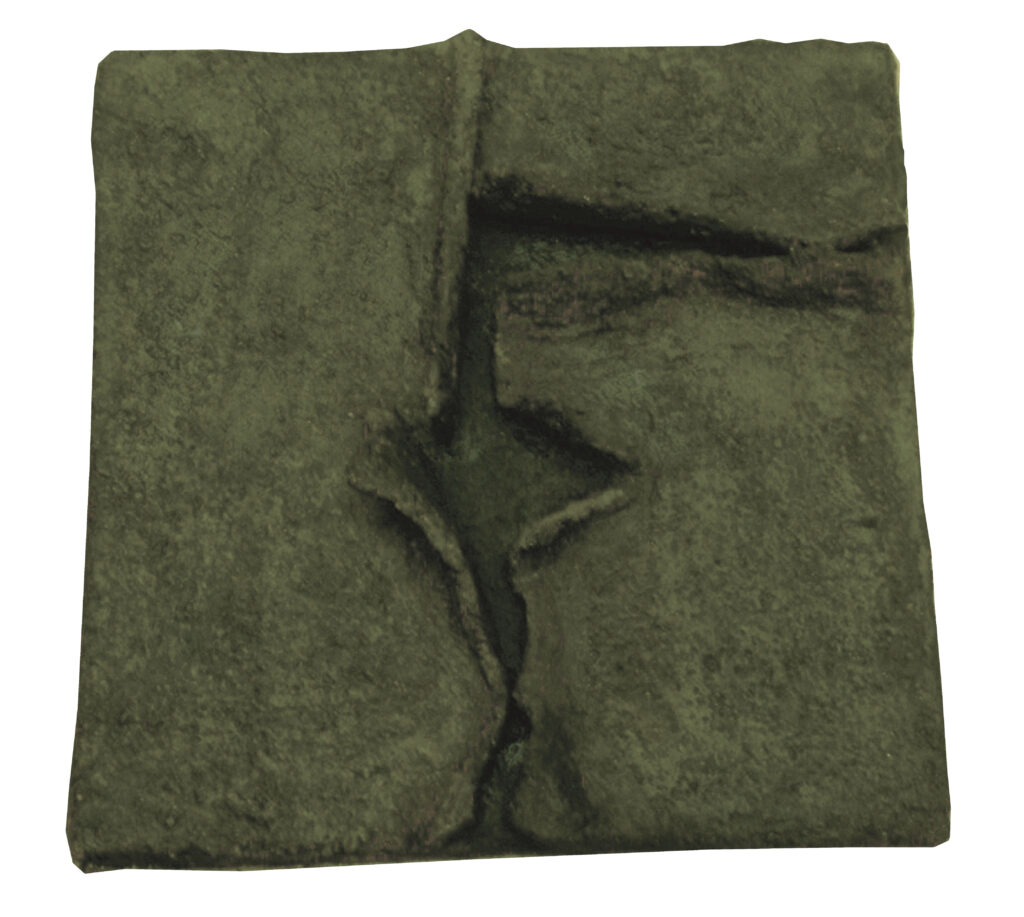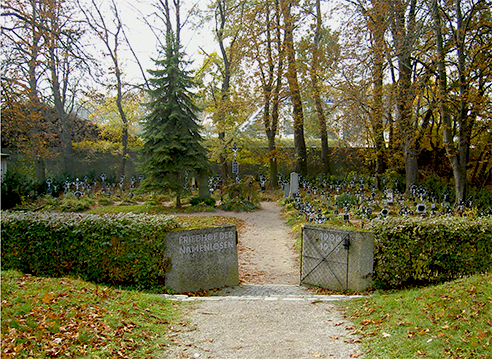
Öffnung / opening 2005
Friedhof der Namenlosen Wien
Bronze 50 × 50 cm
Relief für das Grab einer Unbekannten am Friedhof der Namenlosen 2006
| Friedhöfe sind Orte mit Geschichte. Jeder Verstorbene hat seine persönliche Geschichte. Diese wird durch Hinweise auf Tafeln, Reliefs, und manchmal sehr aufwendig durch kleine tempelartige Anlagen mit Skulpturen erzählt. Ohne den Toten gekannt zu haben, erfährt man etwas über dessen Leben, seine Verdienste oder Beschäftigungen. Dementsprechend sind die Reliefs am Zentralfriedhof fast ausschließlich an die antike Gestaltungsweise angelehnt. Der Friedhof der Namenlosen hingegen ist ein Ort für Menschen ohne Geschichte, ohne Hinweise, die eine intellektuelle Auseinandersetzung mit dem Toten ermöglichen könnten. Es handelt sich meist um Selbstmörder, die aus dem Wasser gezogen wurden, ohne Jemanden, der sie gesucht hätte. Sie sind meist namenlos, identitätslos, geschichtslos, also eigentlich in unserer Vorstellung gar nicht vorhanden . Aber man hat ihnen einen Platz zugewiesen, einen Ort, an dem sie Ruhe finden können. Einen Ort, der durch seinen Namen nochmals ihren Identitätsverlust unterstreicht. Den einzigen Bezug zur Realität bildet das Wasser der Donau, das die Toten einst beim Stromkilometer 1918 ausspuckte. Das Relief soll eine Momentaufnahme sein, eine Auseinandersetzung mit der Angst vor dem Leben und der Auflösung durch den frei gewählten Tod. Lucio Fontana drückte es so aus: „Ich will den Raum öffnen. neue Dimensionen der Kunst schaffen, eine Verbindung knüpfen mit dem Kosmos, der sich unendlich weit hinter der begrenzenden Leinwand dehnt“ Mein Relief soll den Raum öffnen zwischen Anfang und Ende. Zwischen Erde und Himmel und dabei auflösen, was nicht bekannt ist. Die Geschichte |
relief for the grave of an unknown

| Grave yards are places with a history. Every deceased has his own story, told through references on plaques, reliefs and sometimes through very elaborate though small temple- like structures with sculptures. Without having known the deceased, we learn something about his life, his merits or his activities. Accordingly, the reliefs at the central cemetery are mainly based on the antique layout. The graveyard of the nameless, however, is a place for people without a story, without evidence that could make an intellectual evaluation of the deceased possible. They are mainly suicides, who have been pulled out of the water without anybody missing them. They are mostly nameless, without identity, faceless, which means they don’t really exist in our perception. But they have been allocated a place, a location at which they can find their peace. A place underlining their loss of identity through its name. The only reference to reality is the water of the Danube which spat out the dead.at river kilometre 1918. The relief is meant to be a snapshot, dealing with the fear of life and the termination through the chosen death. Lucio Fontana expressed it like this: “ I want to open the room, create new dimensions of art, and establish a connection with the cosmos that spreads unendingly vast behind the canvas. My relief shall open the room between beginning and end. between earth and heaven and in doing so resolve the unknown.The story. Water is something enveloping, protecting. The first connection to life is the amniotic fluid, in which a human slowly grows and from which he is so to speak thrown out. The people swept ashore most of the time chose the water themselves as their last resting place. With it the beginning and the end come to full circle. |